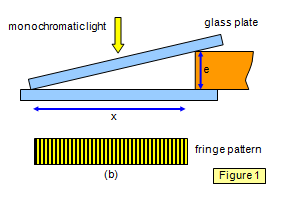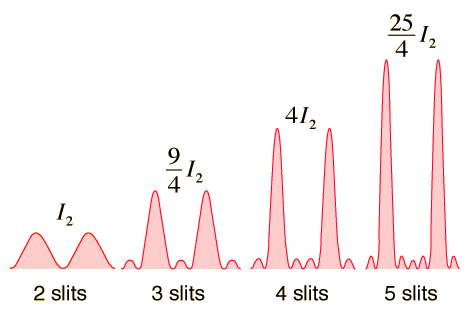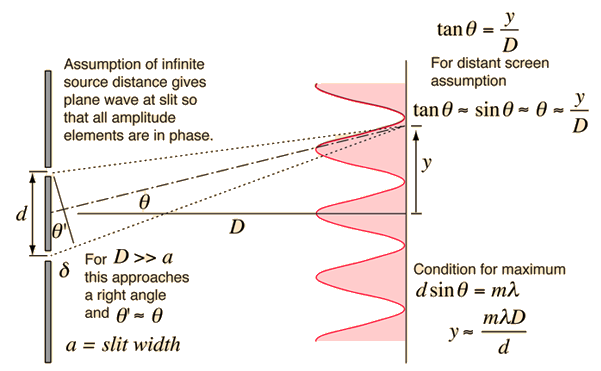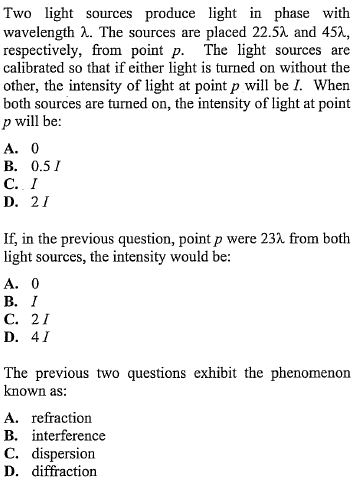- Joined
- Jan 30, 2012
- Messages
- 102
- Reaction score
- 19
For the first one, don't understand TBR's explanation for why II doesn't work and why III does. How exactly does a smaller n difference affect Y, given Y = lambda * L / d? I also don't see how the third affects this equation either.
TBR says this for why III is valid:
"For Statement III, it is perhaps best to
visualize what happens when the hair is moved to either the left or right. If the
hair moves to the left, then the glass slides grow farther apart. If the hair moves
to the right, then the glass slides grow closer together.Taken to an extreme, if the
two slides touch one another, then all of the bright spots are gone (pushed off of
the plate if you will). Opening the gap creates the spots and closing the gap
eliminates the spots, so widening the gap must bring adjacent maxima closer
together. This makes Statement III a valid statement."
Attachments
Last edited:








